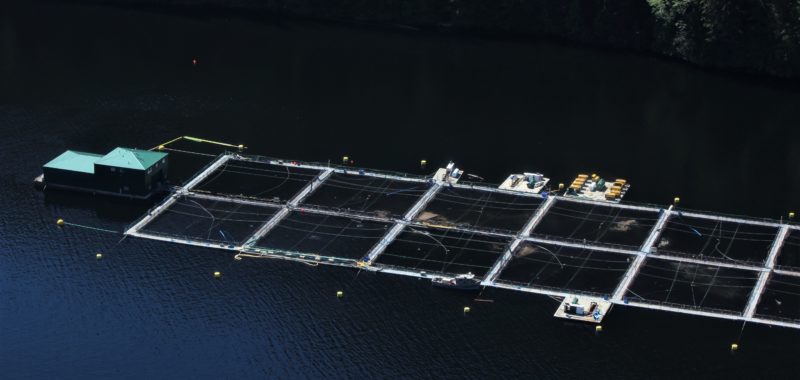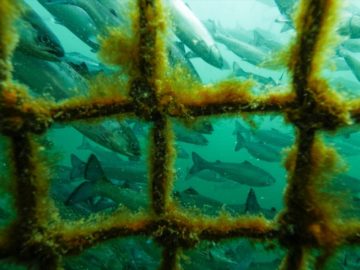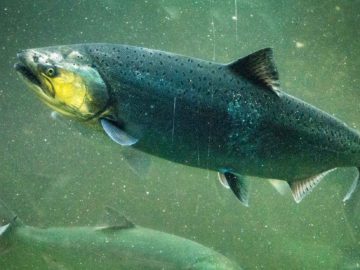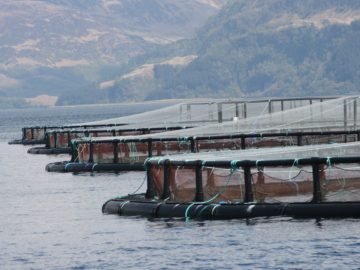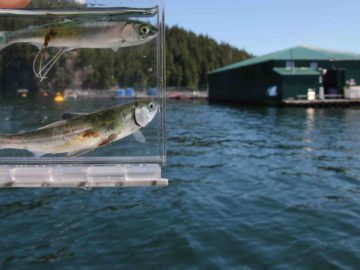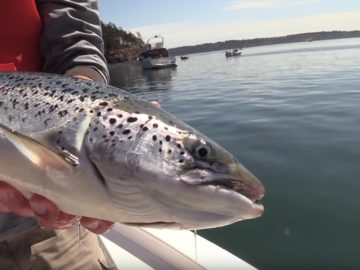Aquaculture has a future in Canada, but it must be properly and transparently regulated to ensure a future for wild salmon and reconciliation with First Nations.
Fisheries Minister Wilkinson announced this week that his Department will begin to engage stakeholders on a “renewed approach” to ensure that Canada’s aquaculture sector is economically successful and environmentally sustainable. SeaChoice welcomes this announcement, which has the potential to ensure future developments are carried out in a responsible and transparent manner. But we caution that there is substantial work to be done to create the “certainty” that the Minister indicates he is seeking to enable the industry to grow. Not the least of the items to be addressed are ensuring the safety of wild salmon populations and reconciling the concerns of First Nations about operations in their territories.
The following are key considerations against the four initiatives that make up the “renewed approach”.
1. A study on the alternative technologies for aquaculture, including land and sea-based closed containment technology.
We welcome the news that the federal and provincial governments will co-operate to study the closed containment industry, but it should be noted that that there have been dozens of studies done over the years; and that industry itself has moved on to building fully integrated, egg-to-market facilities on land in China, Denmark, Dubai, France, Norway, Poland, Scotland, South Africa, Sweden, Switzerland and the US—to mention only the facilities that have been publicly announced. At last count, 294,000 MT of land-based production is under way. By comparison, Canada currently produces a total 120,000 MT from the open-net pens on both coasts.
2. Moving towards an area-based approach to aquaculture management – to ensure that environmental, social and economic factors are taken into consideration when identifying potential areas for aquaculture development – including considerations relating to migration pathways for wild salmon.
Consideration of wild salmon must be central to an area-based approach for aquaculture in Canada. Any new legislative scheme must place the welfare of wild fish first in the consideration of fisheries managers, and ensure that monitoring and evaluation of impacts on wild fish act as effective triggers for management action on the farms. This is particularly important for wild fish species list by COSEWIC as Special Concern, Threatened or Endangered – such as wild Atlantic salmon populations in the east – 10/14 populations meet these criteria, and B.C.’s Chinook salmon populations – nearly half of which are in decline.
Also critical is the industry’s respect of First Nations’ rights and title, and meaningful opportunities for Nations to participate in the design of regulations, management, monitoring and enforcement. In particular, siting criteria should incorporate UNDRIP principles, including the need to obtain free, prior and informed consent for fish farms on First Nation territories.
3. Developing a framework for aquaculture risk management, based on the precautionary approach, which will ensure the sustainable management of aquaculture, and will be the overarching framework for future policies.
SeaChoice partner organizations have been calling on the Department of Fisheries and Oceans to fully implement the precautionary principle and to provide greater transparency about the use of public waters by this industry for at least two decades. We would welcome a regulatory regime that is geared to managing salmon farming with the objective of preserving healthy wild populations of fish and shellfish. This will, however, require a sea-change on the part of the regulators and the science advisors who assist them. Key to managing to prevent impacts is admitting that impacts are occurring and that they are significant.
The organizations also call for greater data transparency from industry, especially on fish health, yet much of the data related to disease and lice outbreaks remain unavailable to the general public – as does information on management of the same. This should be a minimum requirement for the industry to operate in Canadian public waters (as has been stated by the federal senate standing committee on Aquaculture) and is something that has been promised by both the BC Provincial and the federal government.
4. Creating a single comprehensive set of regulations, the General Aquaculture Regulations.
It may not be an easy task, given the various jurisdictions in different provinces, to create a single set of comprehensive regulations. It may not be as valuable as it sounds, either: the ecosystems of each coast are unique and may well require differing treatment. Certainly the concerns for impacts on wild species and other fisheries differ greatly between east and west coasts.
There are some things that could be uniformly expressed across the country, nonetheless. A new General Aquaculture Regulation should properly price the ecosystem services that open-net pen aquaculture takes from the ocean. While this is an area of shared responsibility with the provinces, it is clear that issues such as degradation of water and sea-floor, mortality of juvenile wild fish, bycatch and consumption of wild fish by farmed fish aren’t factored in to the cost of aquaculture operational licensing or provincial tenures. Appropriate and escalating licensing fees can be used to spur investment in cleaner technology.
Furthermore, the Act or Regulation should provide the means by which to implement Mr. Justice Cohen’s recommendation that DFO not have responsibility for the dual mandate of promoting the aquaculture industry and the protection and conservation of wild fish. Appointing a federal agency other than DFO with the responsibility to promote the aquaculture industry would leave DFO to regulate the industry as it does for others that could have impacts on the marine environment, fish and fish habitat – such as oil and gas, mining, shipping, etc.
